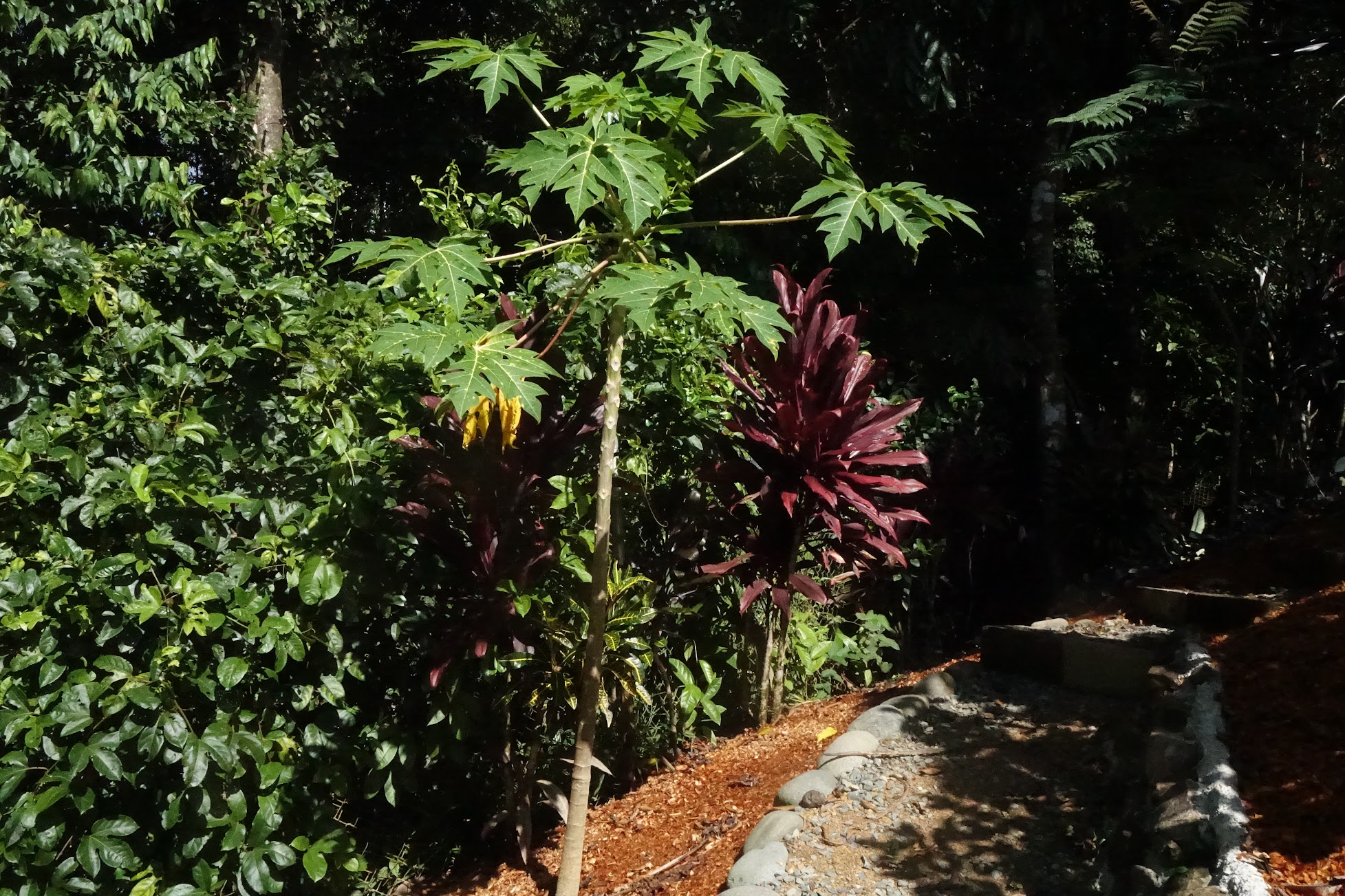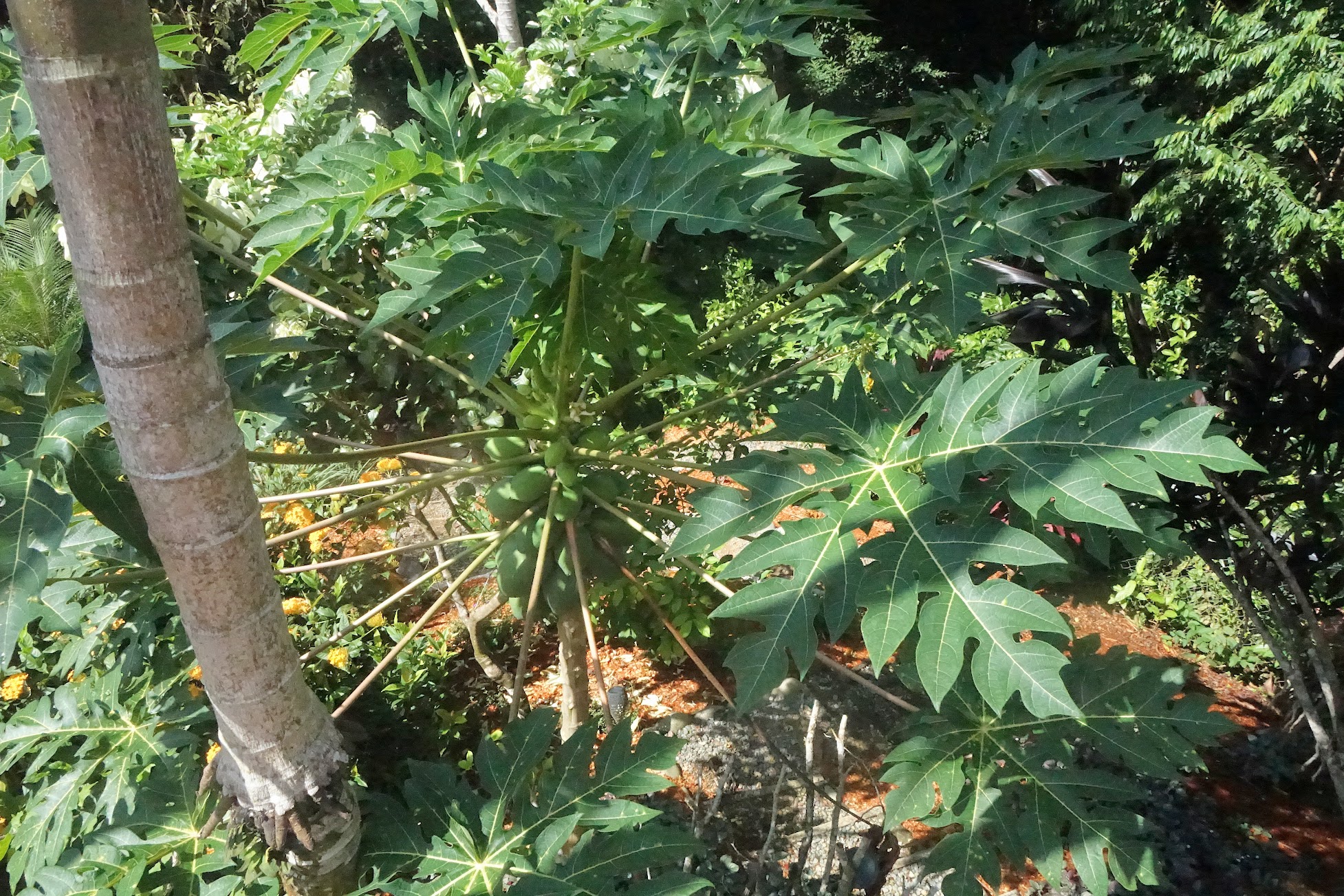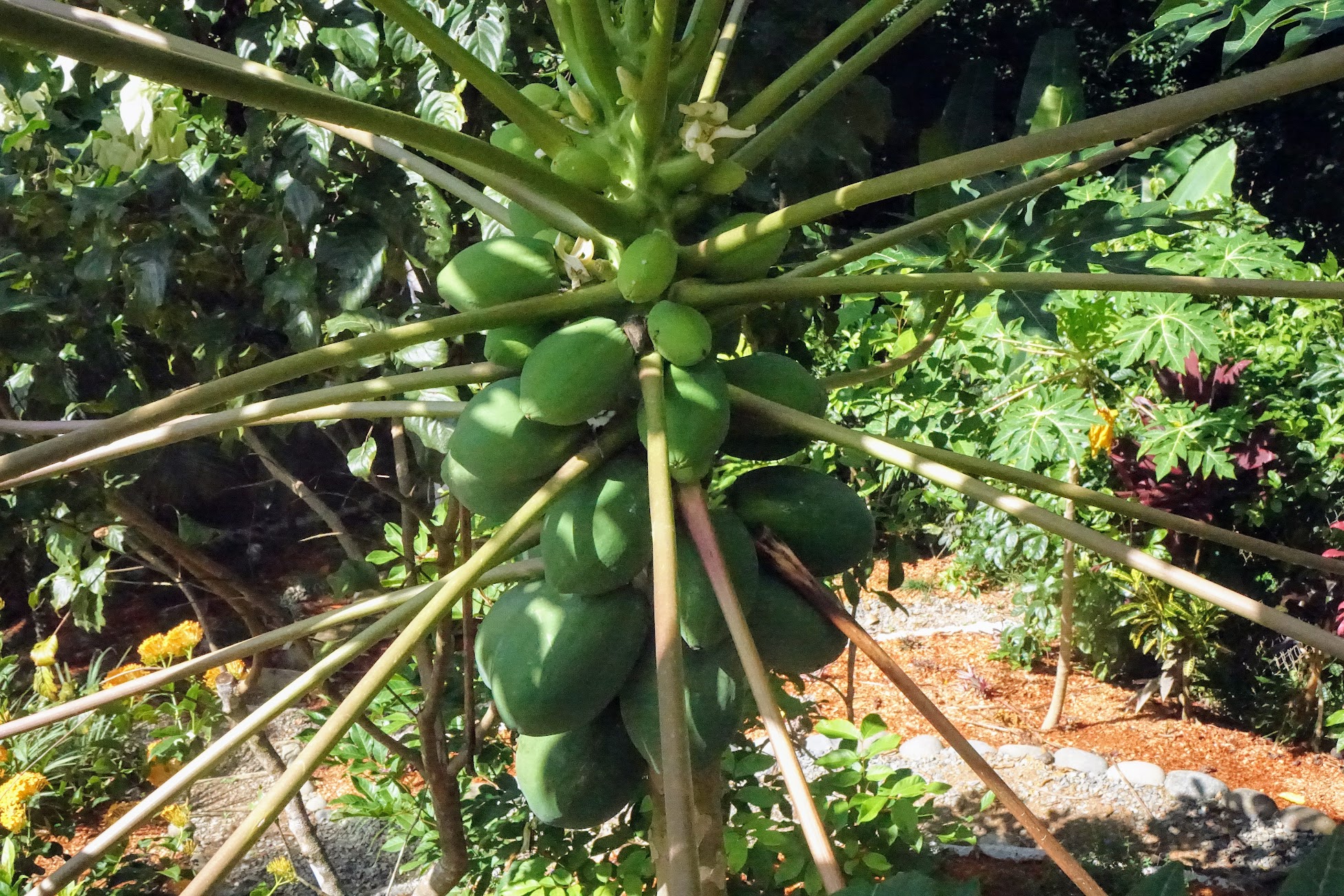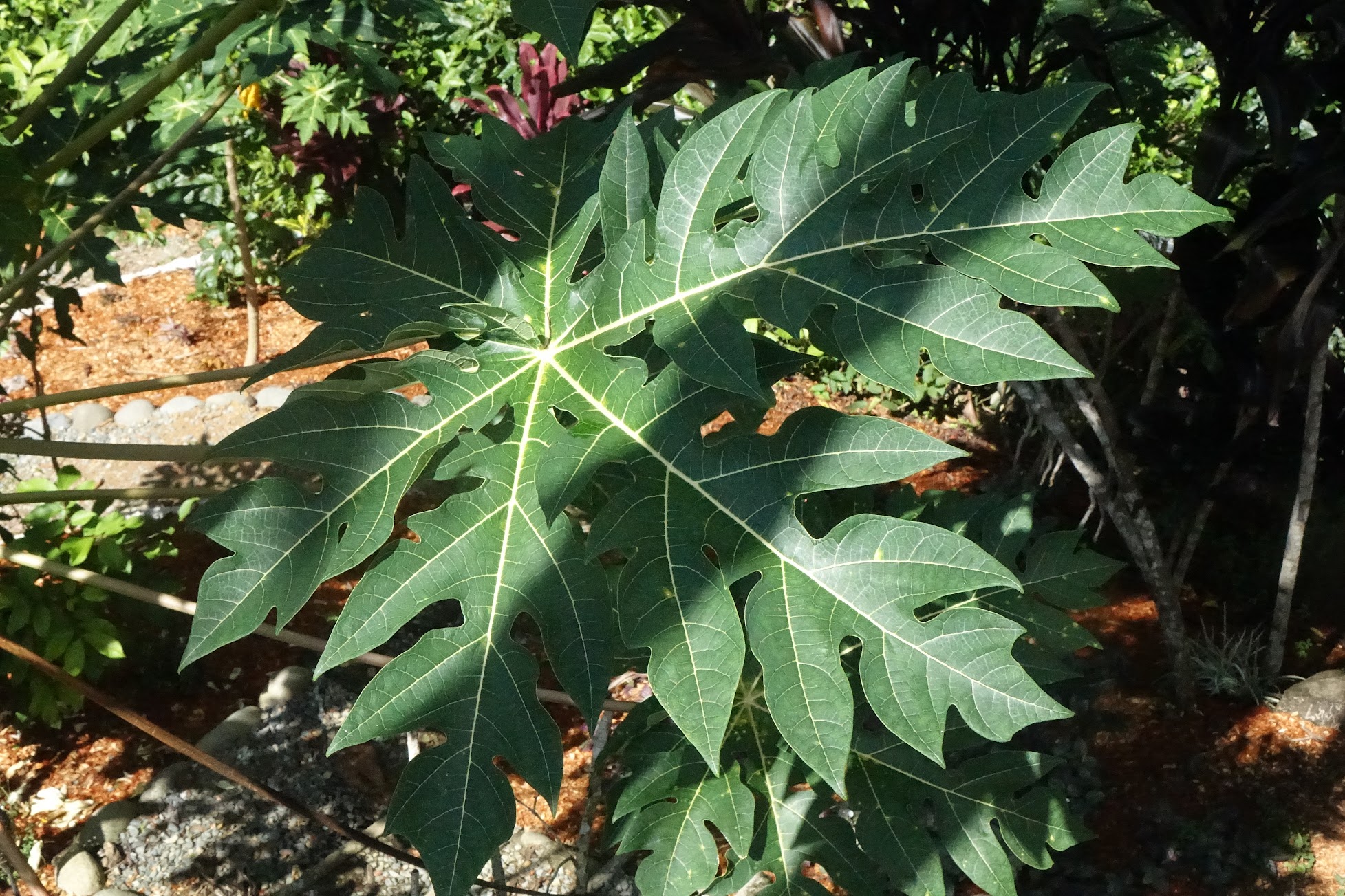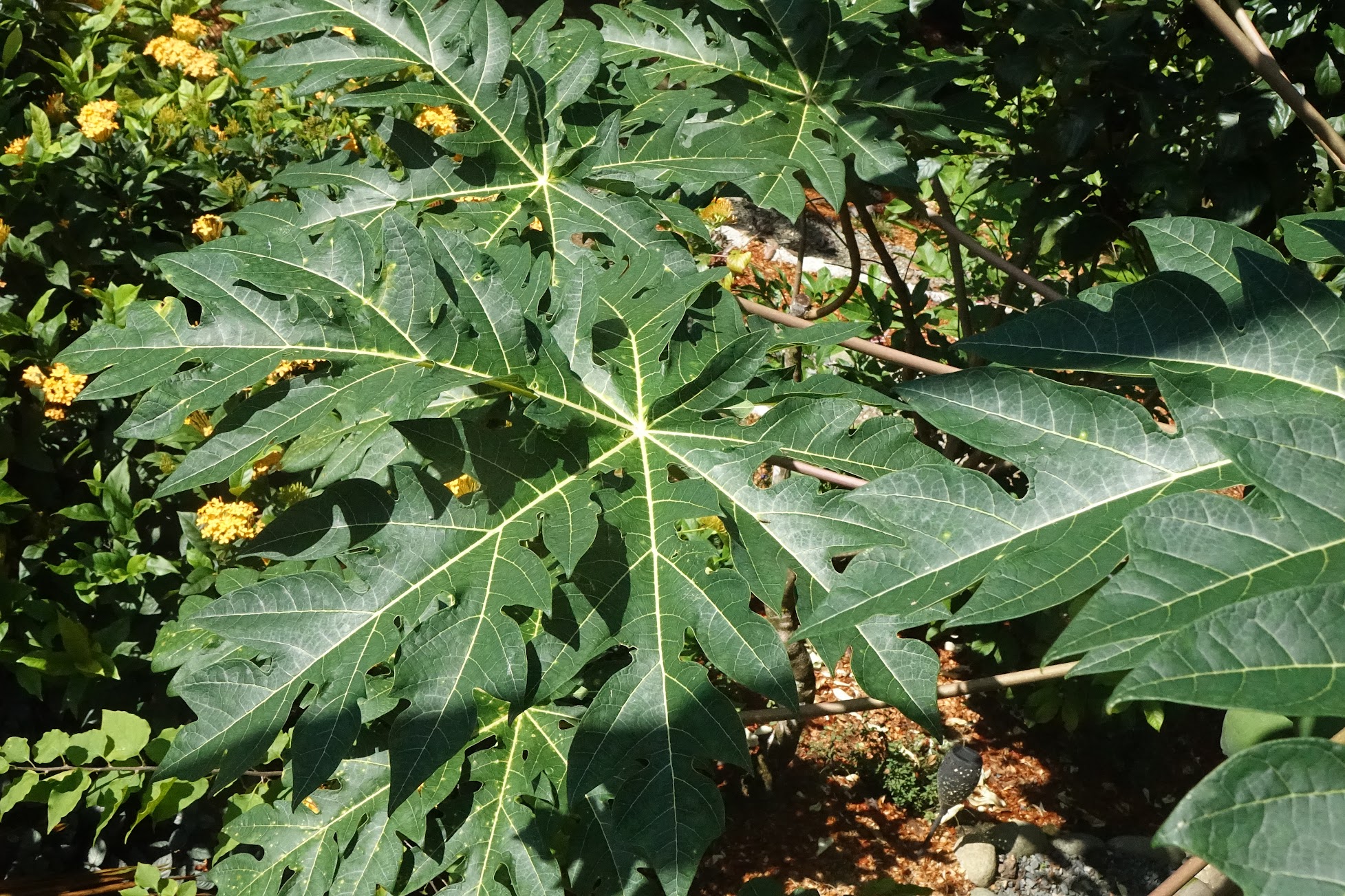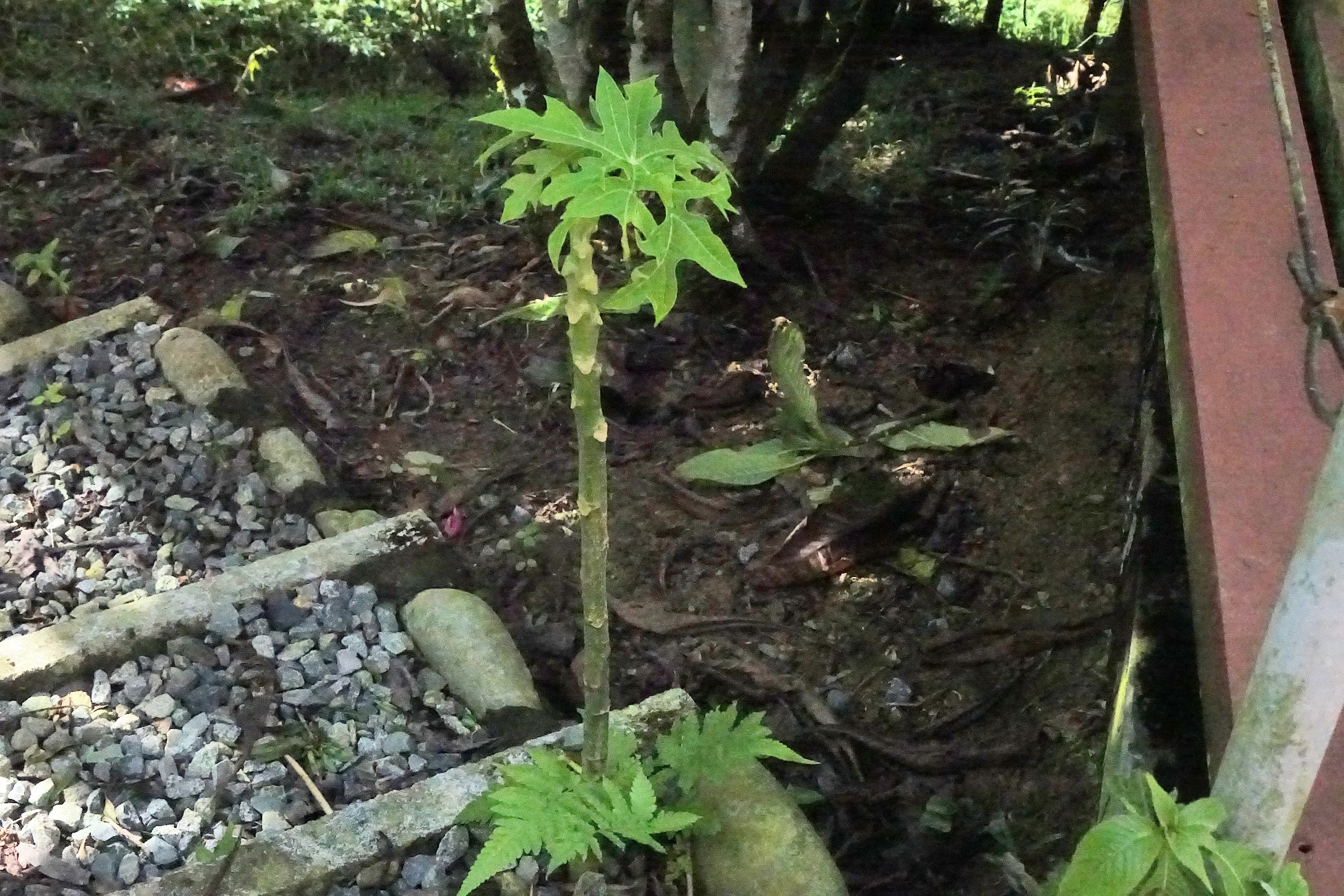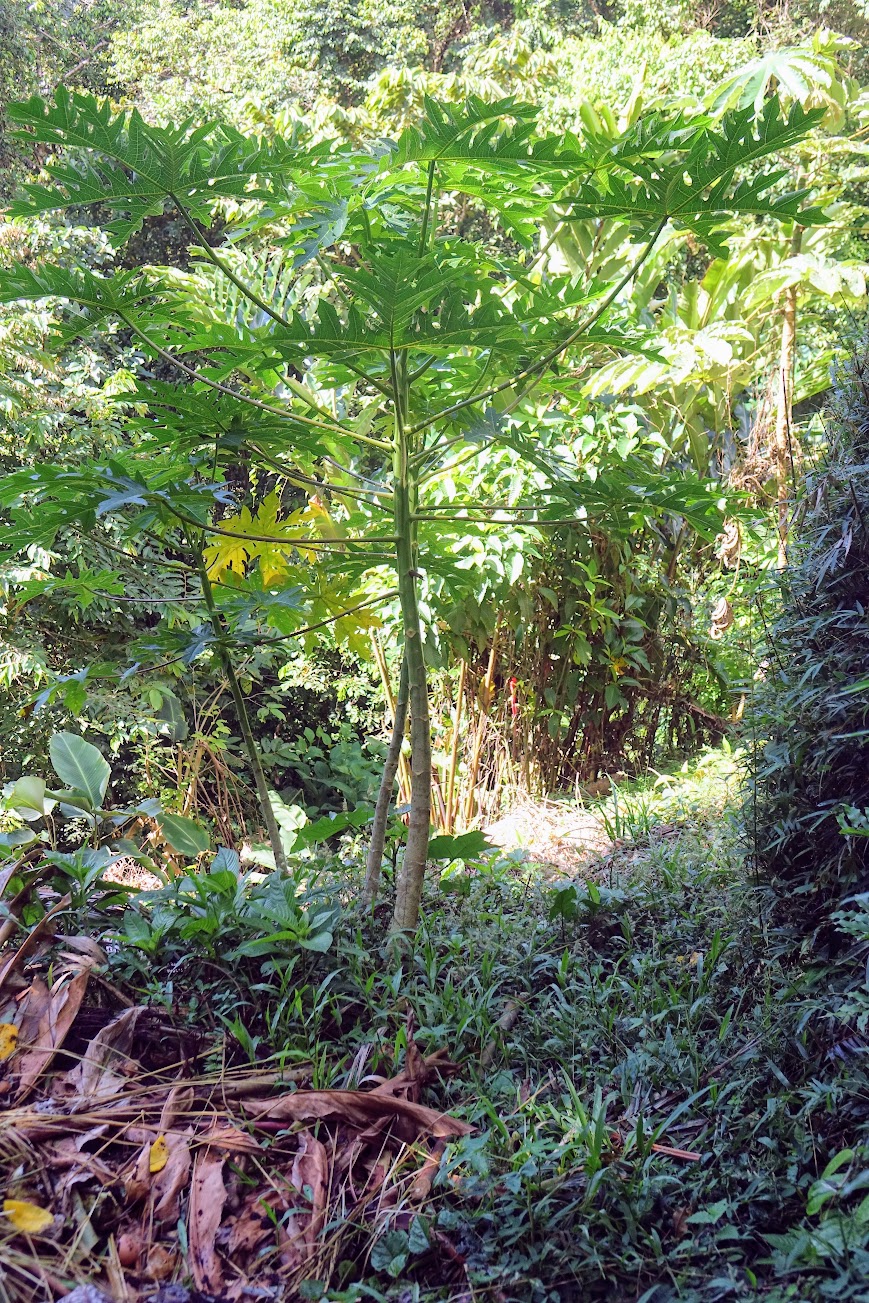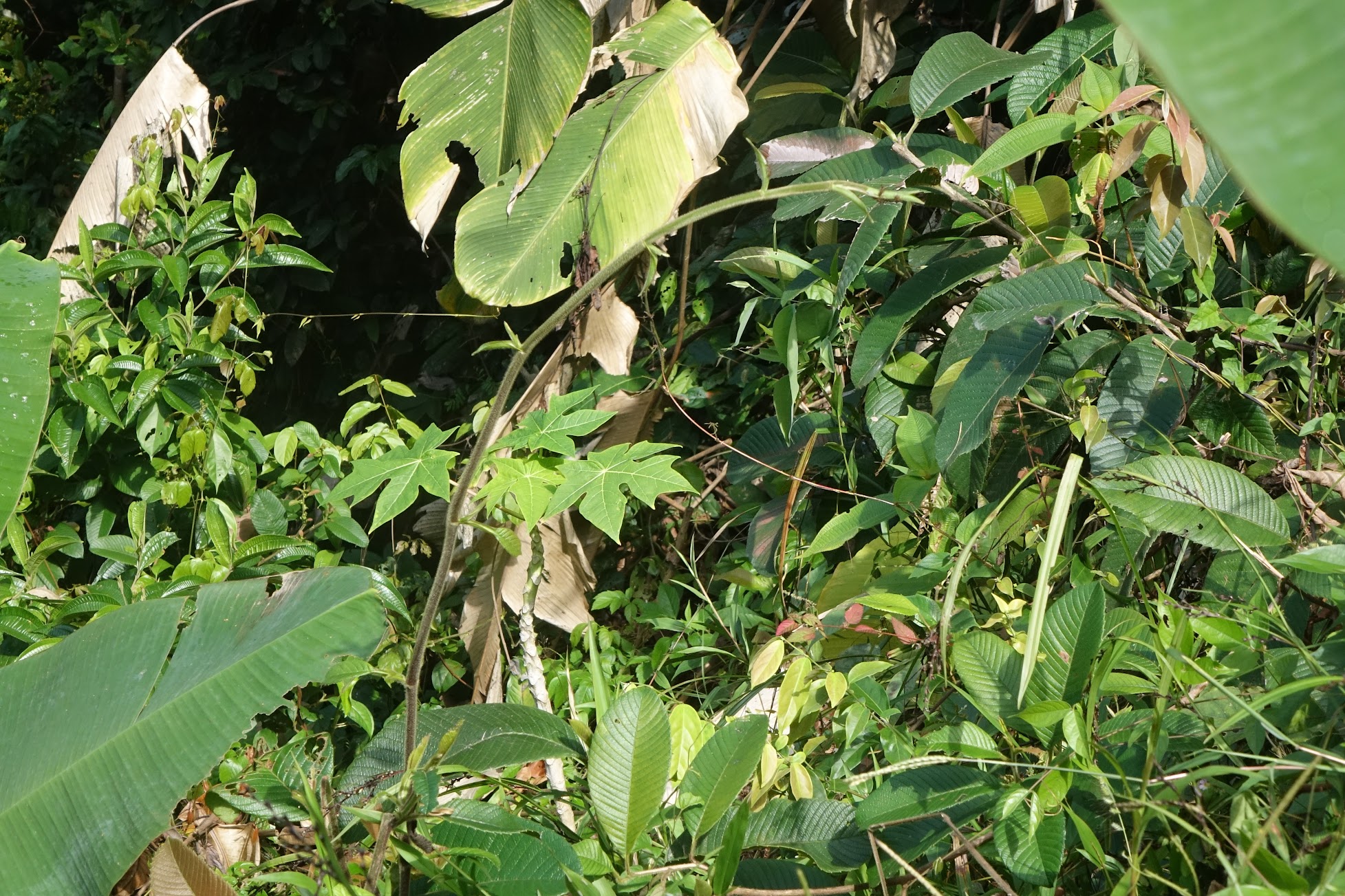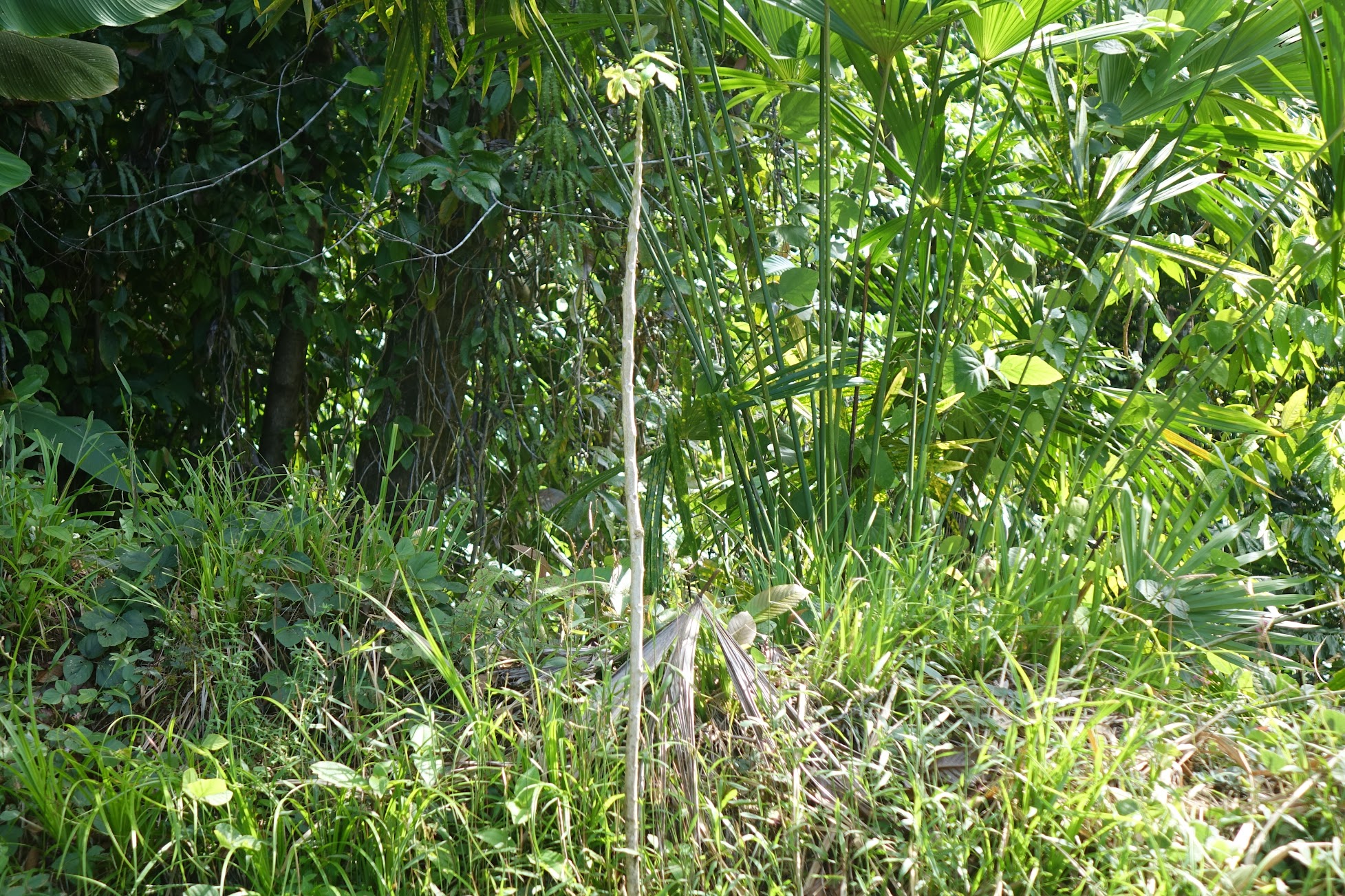26. December 2021
Papaya
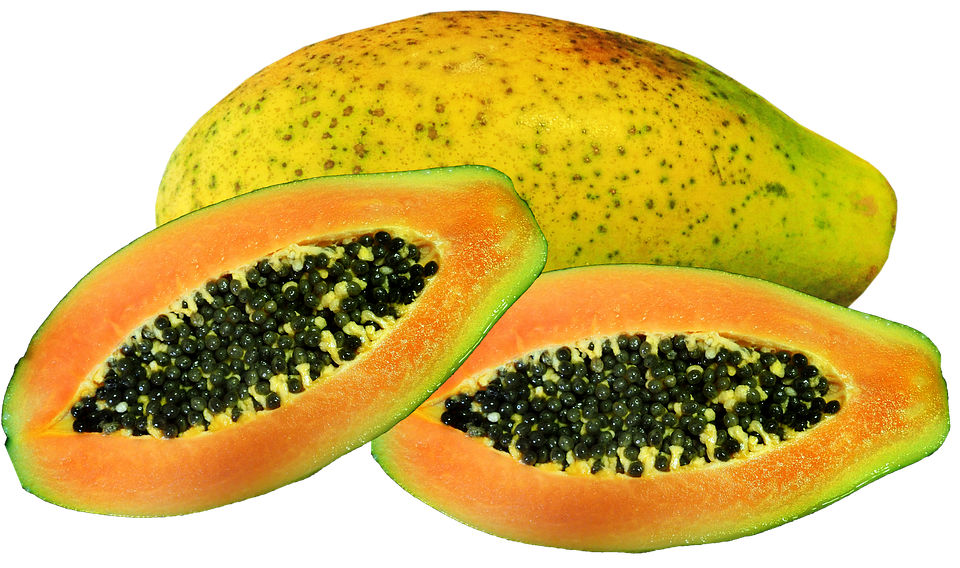
Papaya
Carica Papaya L.
Papaya is a mainstay of Latin American cuisine, and is likely native to the Americas. The plants are “tree like”, in that they have a soft woody stem, large lobed leaves, and grow to around 10 meters. However, they taper off in fruiting productivity at a relatively young age, and are frequently cut down at only 5 or 6 years old. Enormously productive, a single plant can produce 80 pounds of fruit in a single year, once fruiting gets underway (often around 6 months after planting.) Plants can be male, female, or hermaphrodite; the males do not fruit, but provide pollen necessary for female flowers to fruit. Hermaphrodites are (of course!) preferred.
The fruits can be enormous, up to 50cm long and weighing 10lbs (although more commonly found in markets and fruiterias at around half that sized). Flesh is melon like, with a central void that’s filled with seeds.
Growing Papaya
Papaya doesn’t like to be transplanted on sunny days, and has particularly sensitive roots. If at all possible, grow papaya in place. This can be accomplished simply by burying a handful of seeds together, and plucking out surplus that are not required (it doesn’t have a particularly high germination rate, so the more seeds the better). We’ve taken to feeding our dogs the pulpy seed mass, in the hopes that lane-side papayas will magically spring forth in time.
We have several papaya plants, including one which is fruiting (around 8 months after being planted from nursery stock).
Male Papaya
This one is very likely a male. It’s been in the ground for 10 months, started from nursery stock. It has around 6 hours of sun a day, and is probably around 2-3 years old. So far it has started to flower, but isn’t prolific.
Female Papaya
This plant has started fruiting, with the photo having been taken around 8 months after being planted from nursery stock. It receives most of a day of full sun, and has reached a height of 8'.
The plant flowers at the top, near the new leaf growth, directly on the stem. Flowers develop into fruit as the plant continues to gain height, so the most mature fruit are always the lowest.
Leaves are complex and multi lobed, and at full size are 15-20"+ in diameter. The lowest leaves brown and fall away from the stem, leaving visible marks on the stem.
Lower leaves on this plant tend to get spotted before they fall. The upper leaves are clean.
Path Papaya
This little fella popped up on a gravel path, perhaps eliminated in place by canis canis. Currently in almost complete shade, it’s making slow progress.
Compost Papayas
If you keep a compost pile, sooner or later you will get some volunteer papayas popping up. This cluster of three plants is around 4 months old, and are already around 5 feet tall.
Nursery Papayas
This plant was transplanted nursery stock, planted on a west facing slope. It spent much of the rainy season with thick competition from vines before being cleared. Seems to be doing OK, but lacks vigor.
This is a very unhappy plant. Transplanted from nursery stock on a verge next to a lane, it has put on some height but almost no foliage. If it dies I will replace it with something else.
